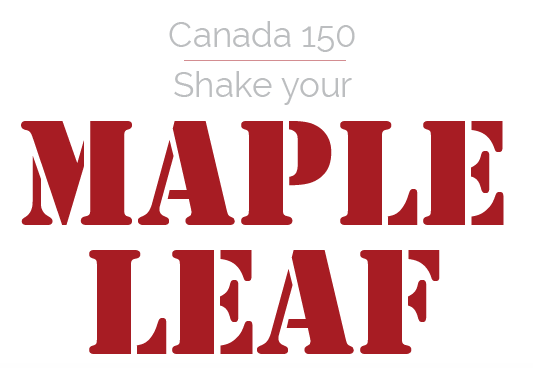Two local indigenous leaders spill on a uniquely Canadian conundrum: celebrating Canada 150 while recognizing five centuries of colonial violence.
Canada 150 has taken a turn for the sombre.
The anniversary falls just as the Dominion and First Nations are dancing an awkward two-step towards reconciliation – maybe.
In the past year alone, Canada has wrapped up the harrowing Truth and Reconciliation Commission, signed on to the United Nations Declaration of Rights for Indigenous Peoples (UNDRIP – after refusing to do so for nine years), and launched the National Inquiry into Missing and Murdered Indigenous Women. These are all efforts to enter into right relations – to reconcile – after 500 years of violence, and also to recognize that the violence has not ended. Much has been left undone.
So, artists and activists nation-wide are challenging Canadians to go deep this July 1 – and see beyond the fireworks. For example, Métis artist Christi Belcourt, who designed the 2008 reconciliation stained glass which hangs in the House of Commons, has launched #Resist150, a multimedia arts project highlighting Canada’s troubled history. The City of Vancouver is seeking to enrich its celebrations, starting by adding a “+” to ‘Canada 150,’ in recognition of the pre-contact aboriginal presence.
How, then, to celebrate Canada 150, while acknowledging that the country itself was built on stolen land and cultural genocide?
Powell River Living sat down with Tla’amin Hegus Clint Williams and Powell River Métis Association President Russell Brewer to ask for their thoughts about the Canada 150 conundrum.
Tla’amin Nation Hegus Clint Williams
How do you plan to celebrate Canada 150?
Hegus • I haven’t been to a Canada Day celebration since I was a child. We agreed to participate with PRISMA on the Beach Canada 150 celebration [June 14] because we were asked by the Regional District and the City to participate. At the moment, that may be the only event I attend. I may go July 1, depending on how PRISMA on the Beach goes.
What was happening for the Tla’amin people in 1867?
Hegus • Contact started in the 1860s, and the people were still thriving. There was a population here of well over 10,000, there were many seasonal village sites around the territory. Life was good. After contact, things started changing drastically. Smallpox was an epidemic and other diseases were introduced. The population dropped by thousands. [Shortly afterwards, the government moved the Tla’amin people onto reserves and claimed their territory as their own, outlawed spiritual practices, and sent their children to residential school, rendering the Tla’amin culture nearly extinct.]
What does Canada mean to you?
Hegus • It’s a tough question. We acknowledge that we live in the best country in the world. But we don’t want that country to forget the past wrongs. We don’t keep bringing this up to rub it in people’s faces. But if history is forgotten it is repeated. I don’t look at Canada as my country. I look at our people and wanting to provide them a better and more prosperous future. So we need to work with governments: the Regional District and the City, the Province and the Feds. It’s a tough pill to swallow, but it’s what we have to work with today. Being bitter or resentful is not going to help our people progress.
What do you make of the reconciliation movement?
Hegus • There are some wonderful examples of reconciliation locally. The United Church approached us because they want to insert a line about acknowledging Tla’amin Traditional Territory in their weekly bulletins. SD47 students designed the pole about “Honouring the Future” that now stands at the Government House. On June 14, a welcome figure will be unveiled at Brooks. The Anglican reconciliation pole. And there’s a group that wants to jointly carve a canoe in the spirit of reconciliation. But the challenge is the follow-up. We have UNDRIP. We have Harper’s 2008 apology. But it seems that we are good at doing the nice photo op, then the work that needs to be done gets forgotten about. We’re heading into 30 years of working on reconciliation, and we’re still talking about the same things, and making symbolic gestures. How do we progress from here?
What is your source of hope?
Hegus • Reconciliation is a big undertaking, and the work must be carried out and respected by all parties. If any country can do it, it’s Canada. We look forward to working with the people of Canada and building healthier and better relationships along the way with all levels of government.
Powell River Métis Association President Russell Brewer
What do you think about the resistance to Canada 150?
Russell • Even in the Métis community there are different opinions about whether to celebrate or not. I think we can celebrate Canada’s 150, but celebrate in the context of needing to address UNDRIP, the TRC and reconciliation. Generally we celebrate Canada Day at a very superficial level. The history is not all great. It’s okay to talk about that. And we need to talk about it if we’re serious about being in an equal partnership with Aboriginal people. It’s a history not a lot of people understand.
Does this conversation resonate widely?
Russell • In artistic and political circles, everyone understands this stuff well. But I worry that some of the understanding is in echo chambers. Canada 150 can help it reach a broader audience. Maybe even at those traditional celebrations, with the party on the beach, maybe we need more emphasis placed on those conversations. They’re uncomfortable. But you can’t move beyond symbolism without conversations. Maybe we can have them at the same time as cutting the cake and putting the flag tattoos on cheeks.
What was happening to the Métis in 1867?
Russell •The Métis were really struggling and being displaced from their lands. Confederation was not a positive outcome for the Métis Nation and Métis communities. [Louis Riel was hung for treason in 1885.]
In your role as city councillor, how are you engaging with reconciliation?
Russell • Last year, I brought forward a motion to Council to adopt the TRC final report and adopt UNDRIP, and council asked staff to report back on ways the city government can implement the six TRC items that are specific to local government – and how we go about celebrating Canada Day can be a part of that. Everyone is walking on eggshells about that. As soon as you propose changing anything, there’s resistance. That’s our role as leadership, though – to push outside those echo chambers. The conversations need to filter out into the coffee shops, the rink, the soccer field.
How would you change the celebrations?
Russell • We’ve maintained our nationalist celebrations in silos. Canada Day is July 1, National Aboriginal Day is June 21, and St. Jean Baptiste Day [Quebec’s nationalist celebration] is June 24. So they’re all within two weeks of each other. Really what we need to do is bridge them, to rethink how we celebrate. History is not static. Traditions change. Maybe we need a reconciliation day, or a reconciliation week. Man, would that be a fun job to take on.
Note: The Métis Nation celebrates Louis Riel Day every year on November 16, the anniversary of Riel’s execution in 1885. Louis Riel Day is also a holiday in Manitoba on the third Monday of February.







